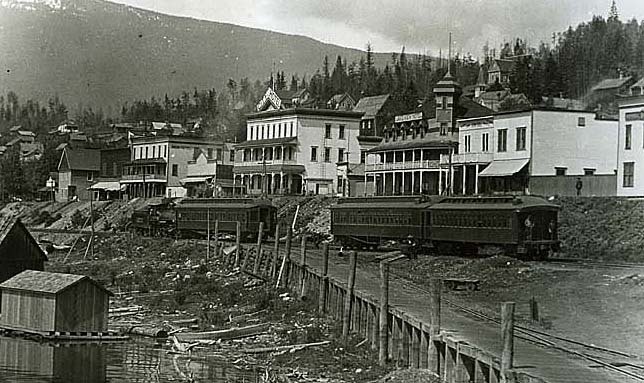VICTORIA – The U.S. has Canada over a barrel on water as well as oil these days, but the tide is turning.
Last week I mentioned a new book called The Columbia River Treaty – A Primer by members of Simon Fraser University’s climate adaptation team. This slim volume makes the case that B.C. has ended up with a shockingly bad deal from this 1964 treaty, which concerned itself entirely with flood control and hydroelectric power.

In those days there was little or no environmental assessment. Agriculture, fish habitat and aboriginal impacts were ignored. More than a decade after the disastrous flood year of 1948, once Ottawa stopped its bureaucratic delays, U.S. public and private power utilities paid B.C. $254 million to build three dams on the Columbia system.
Those dams (and one at Libby, Montana that mostly floods B.C. land) hold back the huge spring runoff from the Rockies and then dole out water for power production in B.C. and for the 15 hydro dams previously built downstream in the U.S.
The U.S. payment was for half the power over 30 years, which B.C. didn’t need at the time. Then our American cousins cut us another cheque for $64 million, an estimate of the value of flood protection from 1968 all the way to 2024.
Boy, did we get taken. The SFU team calculates the value of that flood control to the U.S. at more like $32 billion.
That’s not even the worst of it. The Kootenays were once the leading fruit and vegetable growing area in B.C., bigger than the Okanagan. Now in the Arrow Lakes and other reservoirs, levels rise and fall dramatically to steady the flow south. In addition to the large areas permanently flooded by the Mica, Duncan and Hugh Keenleyside dams, this renders more of B.C.’s prime bottom land impassable.
B.C. is paid precisely zero for this sacrifice, while Washington state has developed a $5 billion-a-year farm economy using our stable irrigation source. That has helped their tree fruit growers push some Okanagan orchardists out of business.
As U.S. billionaires continue to bankroll environmental attacks on B.C. and Alberta energy projects, it’s worth noting that long before the treaty, the U.S. military-industrial complex had wiped out the Columbia River salmon runs. The U.S. Army Corps of Engineers and its private power partners dammed everything they could find, exterminating a fishery bigger than the Fraser that had sustained aboriginal people on both sides of today’s border for thousands of years.
B.C. Energy Minister Bill Bennett and SFU’s Jon O’Riordan both described to me their experience at the Columbia River Basin conference, held last October in Spokane.
Their main impression was that Americans, including traditional tribes, want those salmon runs restored. Vast amounts have been spent on hatcheries and habitat to speed recovery below the Grand Coulee dam, which stands like a giant tombstone for migratory fisheries above it.
Should the Americans ever manage to get salmon above their biggest dam, it will largely be up to B.C. to provide sufficient cool water to keep them alive. That service has an increasing value to the U.S. as well as an ongoing cost to B.C.
Bennett surprised some in Spokane when he said the U.S. needs to pay more for the benefits from the Columbia River Treaty.
The flood control agreement expires in 2024. The treaty requires 10 years’ notice for either country to exit. Climate shifts are expected to make B.C. water more important than ever.
Your move, Uncle Sam.
Tom Fletcher is legislature reporter and columnist for Black Press. Twitter: @tomfletcherbc Email: tfletcher@blackpress.ca
